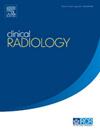Radiomics across modalities: a comprehensive review of neurodegenerative diseases
IF 2.1
3区 医学
Q2 RADIOLOGY, NUCLEAR MEDICINE & MEDICAL IMAGING
引用次数: 0
Abstract
Radiomics allows extraction from medical images of quantitative features that are able to reveal tissue patterns that are generally invisible to human observers. Despite the challenges in visually interpreting radiomic features and the computational resources required to generate them, they hold significant value in downstream automated processing. For instance, in statistical or machine learning frameworks, radiomic features enhance sensitivity and specificity, making them indispensable for tasks such as diagnosis, prognosis, prediction, monitoring, image-guided interventions, and evaluating therapeutic responses. This review explores the application of radiomics in neurodegenerative diseases, with a focus on Alzheimer's disease, Parkinson's disease, Huntington's disease, and multiple sclerosis. While radiomics literature often focuses on magnetic resonance imaging (MRI) and computed tomography (CT), this review also covers its broader application in nuclear medicine, with use cases of positron emission tomography (PET) and single-photon emission computed tomography (SPECT) radiomics. Additionally, we review integrated radiomics, where features from multiple imaging modalities are fused to improve model performance. This review also highlights the growing integration of radiomics with artificial intelligence and the need for feature standardisation and reproducibility to facilitate its translation into clinical practice.
跨模式放射组学:神经退行性疾病的综合综述
放射组学允许从医学图像中提取定量特征,这些特征能够揭示人类观察者通常看不见的组织模式。尽管在可视化解释放射性特征和生成它们所需的计算资源方面存在挑战,但它们在下游自动化处理中具有重要价值。例如,在统计或机器学习框架中,放射学特征增强了敏感性和特异性,使其在诊断、预后、预测、监测、图像引导干预和评估治疗反应等任务中不可或缺。本文综述了放射组学在神经退行性疾病中的应用,重点是阿尔茨海默病、帕金森病、亨廷顿病和多发性硬化症。虽然放射组学文献通常集中在磁共振成像(MRI)和计算机断层扫描(CT)上,但本综述也涵盖了其在核医学中的广泛应用,包括正电子发射断层扫描(PET)和单光子发射计算机断层扫描(SPECT)放射组学的使用案例。此外,我们回顾了集成放射组学,其中融合了多种成像模式的特征以提高模型性能。这篇综述还强调了放射组学与人工智能的日益融合,以及对特征标准化和可重复性的需求,以促进其转化为临床实践。
本文章由计算机程序翻译,如有差异,请以英文原文为准。
求助全文
约1分钟内获得全文
求助全文
来源期刊

Clinical radiology
医学-核医学
CiteScore
4.70
自引率
3.80%
发文量
528
审稿时长
76 days
期刊介绍:
Clinical Radiology is published by Elsevier on behalf of The Royal College of Radiologists. Clinical Radiology is an International Journal bringing you original research, editorials and review articles on all aspects of diagnostic imaging, including:
• Computed tomography
• Magnetic resonance imaging
• Ultrasonography
• Digital radiology
• Interventional radiology
• Radiography
• Nuclear medicine
Papers on radiological protection, quality assurance, audit in radiology and matters relating to radiological training and education are also included. In addition, each issue contains correspondence, book reviews and notices of forthcoming events.
 求助内容:
求助内容: 应助结果提醒方式:
应助结果提醒方式:


